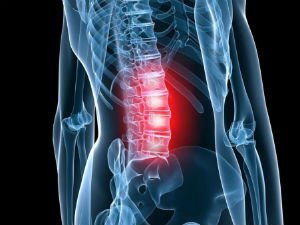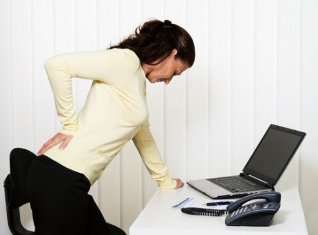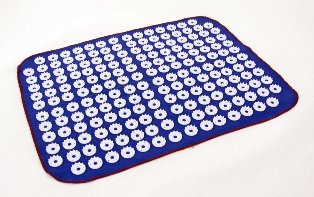
Medical statistics show that lower back pain is caused by lumbar osteochondrosis in 80% of cases. This occurs as a result of degenerative-dystrophic changes in this segment when intervertebral discs and adjacent vertebrae are affected. Lumbar spine osteochondrosis (OBOP) manifests itself in a variety of symptoms: other types of pain, limited mobility, lower body sensitivity disorder, and so on. In the absence of prolonged treatment, degenerative processes spread to the vertebrae, reducing the ability to work, and then the patient may become disabled.
To avoid dangerous complications of lumbar osteochondrosis (LP), complex treatment should be initiated in stages 1-2 of the pathology. In advanced cases, when there are already irreversible changes in the disc or vertebrae, an operation is performed. Prevention should be implemented to avoid osteochondrosis of the lower back and related complications.
Development of lumbar osteochondrosis
To understand what lumbar spine osteochondrosis is, we need to examine the structure of the spinal column. It consists of vertebrae between which are cartilage pads (intervertebral discs). The disc is covered with a hard fibrous membrane (annulus fibrosus) inside which contains the nucleus pulposus. This structure has an impact absorbing function and makes the spine more flexible.
Help. The lumbar section of the spine is under tremendous stress every day as it is able to withstand the weight of the upper body. Therefore, osteochondrosis of the lower spine is diagnosed more often than cervical, thoracic.
With regular stress on the spine, the plates shrink, lose a lot of fluid, reduce their height, and reduce the distance between their vertebrae. The cartilage liner becomes brittle, with microcracks appearing on its surface through which the pulposus nucleus protrudes over time. As the intervertebral discs are further compressed, the outer shell ruptures and the gelatin body falls out, forming a hernia. Abnormal mobility of the vertebrae then occurs, with the load on adjacent segments of the spine increasing.
A little later, the vertebral bodies (osteophytes) begin to form at the edges of the vertebral bodies. Thus, the body tries to stabilize the spine.
Doctors distinguish 4 stages of lumbar spine osteochondrosis:
- 1 degree - problems with the plates begin, the central part dries out, smoothes out, cracks appear on the outer shell. Canceled current.
- 2 degrees - the cartilage lining sags, the vertebrae get closer together, become more mobile, the muscles and ligaments around the spine sag. Pain appears.
- 3 degrees - protrusions, injuries and subluxations of the vertebrae develop. Pain increases, mobility is limited, lower body sensitivity is disturbed.
- Grade 4 osteochondrosis is characterized by the appearance of osteophytes that can damage the nerves in the spine and adjacent vertebrae. There is constant pain, severe neurological disorders and other complications, and the risk of disability increases.
The easiest way to lower back chondrosis (stage 1), but identifying the disease at this stage is very difficult. Grade 2 intervertebral osteochondrosis is treated by conservative techniques. For surgery, see 3-4. Stages may be required.
Help. According to statistics, OBO is more common in patients after 30 years. Cases of pathology often occur after 20 years. About 80% of patients over the age of 60 suffer from the manifestation of this disease.
Causes
To understand how to treat osteochondrosis PKOP (lumbosacral spine), you need to know its causes:
- Regular static or dynamic load on the lumbar region. The risk group for developing osteochondrosis includes office workers, professional athletes (weightlifting), relocators, builders, and so on.
- Poor posture, prolonged improper posture.
- Genetic predisposition, abnormalities in the development of vertebral bodies. This category includes youthful software - the curvature of the spine caused by pathologies of the vertebral bodies.
- Spinal cord injuries.
- Hormonal imbalances, metabolic disorders, diseases of the endocrine glands that disrupt metabolism in the lumbar segment.
- Age-related body changes provoke disc wear.
- Bone tuberculosis, osteomyelitis (inflammation of the bone tissue), ankylosing spondylitis (inflammation of the vertebrae and joints), rheumatoid arthritis, etc.
Illness is often caused by several causes.
In addition, there are factors that trigger the development of lumbar osteochondrosis:
- Overweight.
- Passive lifestyle, long sitting.
- Regular consumption of unhealthy foods (fatty, fried foods, pastries, semi-finished products, etc. ).
- Lack of fluid, dehydration.
- Congenital disorders of the structure of the spine, such as an additional vertebra.
- Regularly uncomfortable heels.
- The period of pregnancy and then the load on the spine increases.
- Sudden rejection of professional athletes or excessive sports in people who have previously lived a passive lifestyle.
- Smoking, frequent and excessive alcohol consumption.
Many more factors can trigger degenerative-dystrophic processes in the lumbar spine. For example, flat legs, frequent hypothermia of the back, frequent stress, sleep disturbances, etc.

Symptoms
The symptoms of osteochondrosis of the lumbar spine are diverse, depending on the stage of the pathology and the localization of the affected area.
Doctors differentiate between reflex and compression syndromes (the complexity of symptoms) in OBOR. The former occur when the receptors on the outer shell of plates, ligaments, and joint capsules become irritated, and the latter when the nerve bundles, blood vessels, and spinal cord are compressed.
Lumbar osteochondrosis has the following reflex syndromes:
- Lumbago. Shot pain in the lower back with sudden movement or exertion. In the smallest movement attempt, the pain syndrome intensifies, so the patient freezes in one position. The muscles in the injured area are very tense, with touch the painful feelings become even more pronounced. These manifestations are related to the movement of the pulposous nucleus inside the outer shell.
- Lumbodynia. The aching pain develops over several hours or days. The discomfort increases with movement, with a change in body position. It weakens when a person assumes a horizontal body position with a roller under the lower back. If you raise a straight leg in this position, the pain will increase (Lassegh's symptom). The degree of muscle tension is less than that of lumbago. The mobility of the lower back is limited.
- Lumboischialgia. Painful feelings (sharp or painful) spread from the lower back to the lower body. During the movements, this signal increases. The pain is relieved by resting on your back. The muscles in the affected area are tense, and when touched, the pain syndrome becomes pronounced.
Symptoms of compression syndromes depend on which parts of the lumbar segment are damaged. The characteristic signs are associated with compression of the spinal nerves, hernias, osteophytes, displaced vertebrae. This condition is called radiculopathy, in which the pain increases with the slightest movement, the muscles of the lower back become tense, and mobility is limited.
Clinical manifestations of compression syndromes depending on the injured vertebrae of the lumbar segment:
- L1 - L3 - pain and numbness in the lumbar region, the front and the thigh, the patient has difficulty bending / bending the leg.
- L4 - pain syndrome extends to the front of the thigh, descends to the knee (behind it). Sensitivity is disturbed in the same area.
- L5 - painful sensations radiate to the buttocks, the outer part of the thigh, descends along the front of the lower leg to the inner part of the foot and the big toe. Numbness is felt in the same area, it is difficult for the patient to bend his big toe.
- S1 - the pain extends from the lower back to the buttocks, on the outside and back of the thigh, on the lower leg, to the outside of the leg. Numbness is felt in the same areas, the muscles of the lower leg are weakened, making it difficult for the patient to stand on his toes.
There is a risk that several nerve bundles can be damaged at the same time, such as L5, S1. If the hernia moves backwards, it can compress the spinal cord.
Compression of the blood vessels in the lower back increases the likelihood of weakening of the leg muscles, numbness of the lower extremities, and disturbed control of the process of urination and defecation. In men with OBO, erections are impaired, and in women, the main symptoms may be accompanied by inflammation of the ovaries or uterus.
Diagnostic Measures
To diagnose OBO, the doctor examines the patient, palpates the patient to determine the condition of the muscles, and identifies the curvature of the spine. It is important that you tell your specialist in detail about your symptoms so that you can diagnose them more easily.
Instrumental tests help detect intervertebral osteochondrosis:
- X-ray of the lower back (frontal and lateral projection).
- Computed and magnetic resonance imaging.
X-ray allows the structure of the EPP to be assessed. To detect abnormal mobility of the vertebrae, an X-ray is taken in the flexor and elongated position. This study allows us to notice that the intervertebral fissure narrowed, the vertebral bodies moved, and osteophytes appeared at their edges. However, this diagnostic method is considered obsolete.
Today, CT and MRI are increasingly used to detect degenerative-dystrophic changes in the spine. These highly informative studies allow the assessment of the condition of the vertebrae, plates, intervertebral foramina, and spinal cord. They are used to detect indications, the direction of the hernia, the degree of compression of the nerve bundles, the spinal cord and the blood vessels.
Management
LUMBAR OSTEOCHONDROSIS MEDICINES

Treatment of osteochondrosis EPP lasts from 1 to 3 months to 1 year. The success of therapy depends on the patient himself, who must strictly follow the doctor's recommendations. With self-medication, the patient's condition usually worsens.
Management goals:
- Stop or alleviate software symptoms.
- Determine the cause of the disease, try to exclude it from life.
- Eliminate the inflammatory process.
- Restore blood circulation, metabolic processes in the lumbar spine.
- Try to repair the condition of the damaged cartilage lining, stop any further degenerative changes.
To achieve such goals, it is recommended to perform a complex therapy. It usually starts with taking medications:
- Muscle relaxers. They relax muscles and relieve pain and inflammation.
- NSAIDs. They have anti-inflammatory, analgesic and antipyretic effects.
- Anticonvulsants. They help stop smooth muscle cramps, relieve pain.
- Anesthetics. It is used for severe pain syndrome in the form of therapeutic blockade.
- Glucocorticosteroids. They also help treat pain. However, these drugs have the ability to kill bones, so they are taken for a short time and only after approval by a doctor.
- Sedatives. They relieve neuromuscular tension, improve sleep.
- Vitamins (groups B, E, C, A). It restores the condition of the affected nerves, relieves pain.
Caution. Non-steroidal anti-inflammatory drugs should not be taken in case of gastritis or gastric ulcer as they further damage the mucous membranes of the gastrointestinal tract.
In case of exacerbation, the patient receives injections and takes oral medications after the main symptoms have resolved.
External agents (gels, ointments, creams, rubs) are also used.
The question of what to do in chronic lumbar osteochondrosis is quite relevant. If OBOP becomes chronic, after the main symptoms are relieved, the patient is given chondroprotectors, drugs that restore blood circulation, drugs based on B vitamins. They help restore innervation, normalize blood supply to the affected area, and prevent further development of the pathology.
Treatment of lumbar spine (stage 1) chondrosis is performed using chondroprotectors, which slow down the development of degenerative processes, accelerate cartilage regeneration. In addition, the patient is prescribed vitamin and mineral complexes. This form of osteochondrosis is the easiest to cure.
OTHER CONSERVATIVE TECHNIQUES
For acute chronic osteochondrosis (1-2 degrees), the following treatments will help stop it:
- Ultrasound therapy relieves pain and inflammation and normalizes blood flow to the affected area.
- Detensor therapy is the safe pulling of the spine due to the weight of its own body, after which muscle tone normalizes and mobility is improved.
- Magnetotherapy reduces pain and inflammation in the muscles around the spine.
- Reflexology (inserting needles into the bioactive points of the body) speeds up blood circulation, relieves inflammation and edema.
- Manual therapy (the effect of the doctor's hand on the affected area) and massage normalize muscle tone, reduce compression of nerve bundles, improve the nutrition of intervertebral discs, and restore spinal structure.
- Electrophoresis allows the transport of medical solutions through the skin to the bone and cartilage tissues.
- Drasonvalization improves blood circulation, metabolic processes, reduces pain, restores skin sensitivity.
There are much more effective procedures to help improve a patient's condition 5-15 times. The most important thing is to get your doctor’s approval before performing them.
IN-HOUSE SOFTWARE OPERATION
If you are wondering if it is possible to treat OBO at home, talk to your doctor. If the specialist has given permission, start therapy, which usually consists of the following points:
- Diet. If lumbar osteochondrosis is caused by a disturbance in blood flow or metabolism, exclude fatty, fried, spicy foods, eggs, etc. from the menu. Fill the menu with fresh vegetables, fruits, lean meat, fish, dairy products. Add alcohol, tonic drinks (tea, coffee). Drink filtered water, compotes, herbal teas.
- Exercise or use rubbing and compression to restore blood circulation.
- Sleep on an orthopedic mattress with a low pillow. If you have a sedentary job, buy a chair with a backrest that supports your spine. Occasionally wear special corsets or belts.
- Exercise therapy helps to strengthen the muscle ligament, relieving part of the load on the patient's spine. The complex for each patient is put together by a doctor or instructor.
- Self-massages the lumbar region. However, ask your professional how to do this well.
- Use folk remedies for rubbing, compressing, bathing, etc. in the form of.
- The needle-picking plastic is a multi-spiked disc that improves blood circulation, metabolic processes in the injured area, reduces muscle pain and relaxes.

And you can also use creams and patches with herbal decoction at home.
Help. A novelty in the treatment of osteochondrosis is a massage bed, which is suitable for even the most disorganized patients.
Keep in mind, however, that home treatment can only be done with your doctor's permission.
Surgical treatment
Lumbar osteochondrosis surgery is prescribed when conservative techniques have proven ineffective for a long time. And surgery also refers to involuntary urination, defecation, and cauda equina syndrome (pinching of the nerves in the lower spinal cord).
The following surgical techniques are used to treat OBO:
- Spondylodesis - fusion of adjacent vertebrae.
- Facetextomy - removal of the intervertebral joints that pinch the spinal nerve.
- Laminectomy is the removal of the layer covering the spinal canal that compresses the spinal cord.
- Discectomy is the complete or partial removal of the intervertebral disc that causes compression of the nerve root or spinal cord.
- Corpectomy - removal of the vertebral body and adjacent cartilage pads. The empty space is then filled with bone graft and 3 vertebral segments merge.
Help. There is a risk of complications after surgery: spinal cord injuries, nerve bundles, broken grafts, infections, etc.
You should undergo rehabilitation after treatment to speed up your recovery.
Complications
In the absence of appropriate therapy, the risk of such complications of lumbar osteochondrosis increases:
- Herniated disc, pinched nerve root, or spinal cord.
- Prolonged inflammation increases the likelihood of developing radiculitis (inflammation of the nerve roots).
- Sciatica (an inflammatory lesion of the sciatic nerve) in which there is severe pain and numbness in the lower limb.
- In case of damaged blood circulation in the spinal cord, the likelihood of compression myelopathy (compression of the spinal cord with different formations: bone fragments, hernia, tumors, hematoma) increases.
- Cauda equina syndrome - compression of the roots of the lower spinal cord, leading to deterioration of the function of the intestines, pelvic organs and lower extremities.
To avoid such complications, treatment should be started as early as possible.
Prevention
To avoid lumbar osteochondrosis, follow these rules:
- Live a moderately active lifestyle (walk more often, exercise regularly, log in to a pool).
- For sedentary work, heat every 1. 5 hours.
- Sleep on an orthopedic mattress.
- Avoid excessive physical exertion, lift weights only from a semi-squat position, and put a special belt on your lower back first.
- Buy orthopedic shoes.
- Eat normally, take vitamin and mineral complexes as prescribed by your doctor.
- Learn to relax.
- Do not try to cause hypothermia.
- Over time, treat diseases that can cause OBO.
- Give up bad habits.
By following these recommendations, you can avoid degenerative changes in your spine and improve your health.
The most important
If you notice symptoms of lumbar osteochondrosis, see your doctor immediately. Self-treatment can worsen your condition and cause complications. Lumbar chondrosis (stage 1) is treated with exercise, physiotherapy and chondroprotectors. In the later stages, medications, massages, manual therapy, etc. are prescribed. They apply. In the absence of positive dynamics or neurological symptoms for a long time, your doctor may prescribe surgery. The patient should strictly follow the doctor’s recommendations to speed up recovery.





































